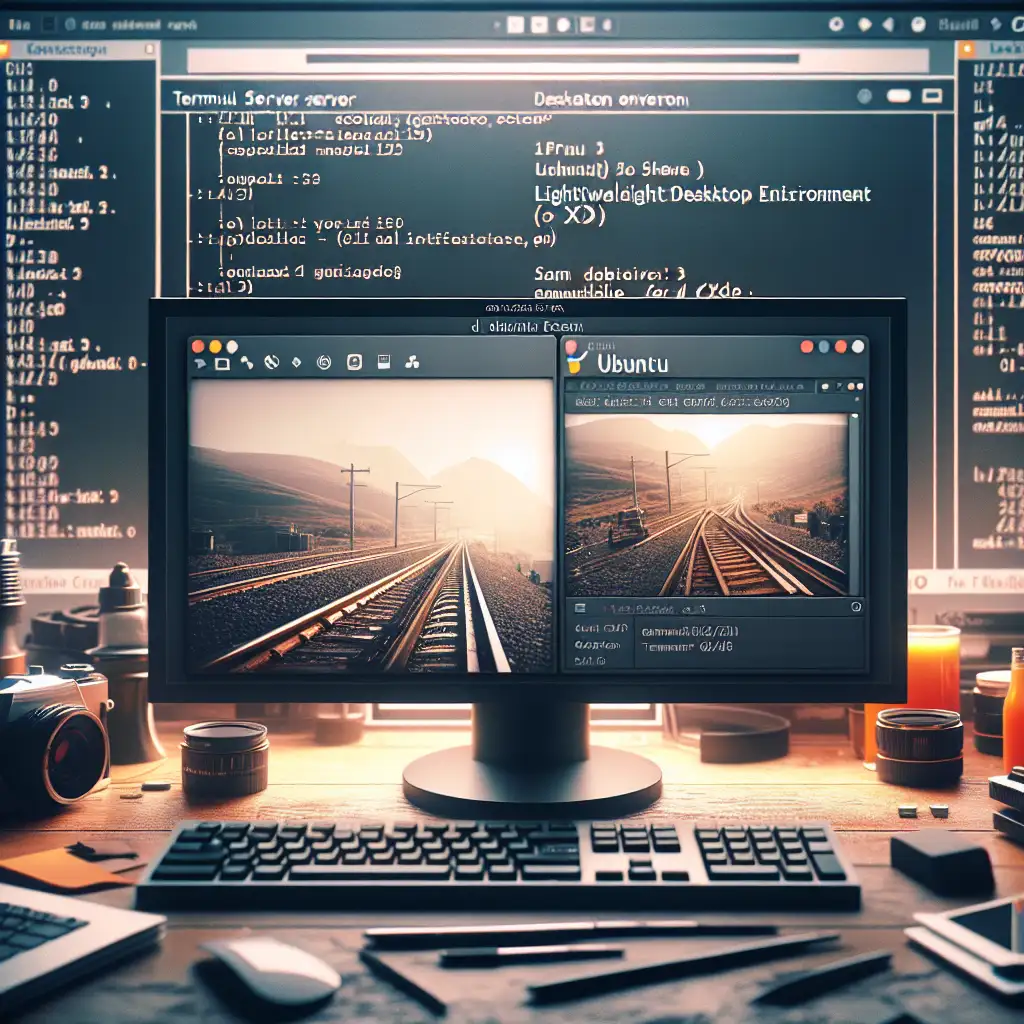Installing a Minimal Desktop Environment on Ubuntu Server
Most server administrators rely on command-line tools. Occasionally, though, a lightweight graphical interface accelerates specific workflows: visual log inspection, drag-and-drop file movement, or graphical browser-based utilities (for instance, running Chrome for Selenium test hosts on CI nodes). Here’s a streamlined, low-footprint approach to bringing a GUI onto Ubuntu Server—suitable for headless, VM, and VPS environments.
Lightweight GUIs: Context and Choices
Traditional desktop stacks (Ubuntu Desktop, Kubuntu, etc.) install hundreds of additional packages—unnecessary overhead for headless workloads. Key considerations for minimal GUIs:
| Desktop | RAM (idle) | Startup Daemons | Suitable for |
|---|---|---|---|
| XFCE | 120-180MB | LightDM | Most hardware |
| LXDE/LXQt | 90-120MB | LightDM | Older/x86 VPS |
| MATE | 150-210MB | LightDM | GNOME2 fans |
| GNOME/KDE | >400MB | GDM/KDM | Not advised |
XFCE is a reliable midpoint—straightforward resource profile, mature codebase, widely supported.
0. Baseline: Patch Before Install
Out-of-date repositories routinely cause dependency errors. Update/upgrade first:
sudo apt update
sudo apt -y upgrade
If your apt sources are stale or geo-mirrored, latency or mirror corruption can result in timeout errors like:
E: Failed to fetch http://archive.ubuntu.com/ubuntu/... Release.gpg
Switch sources if that’s recurrent.
1. Install the XFCE Stack
For Ubuntu 22.04 LTS (jammy):
sudo apt install -y xfce4 xfce4-goodies
xfce4-goodiesadds panel plugins (CPU usage, notifications). Remove it if every MB counts.- Want to keep things tighter? Use
apt install xfce4 --no-install-recommendsand cherry-pick only the essentials.
2. Add a Display Manager
LightDM is still the best tradeoff—minimal footprint, simple config.
sudo apt install -y lightdm
Installer prompts to select default display manager if you already have one (rare on servers). If not, select LightDM as follows:
sudo dpkg-reconfigure lightdm
Observed issue: On some VPS images with cloud-init scripts, LightDM may not autostart. Double-check status.
sudo systemctl status lightdm
3. Enable and Start Graphical Session
Immediately start the DM, then enable for future boots:
sudo systemctl start lightdm
sudo systemctl enable lightdm
Reboot:
sudo reboot
Common scenario: Headless VPS, no keyboard/monitor attached. In that case, stop here and proceed to remote access setup before restarting the service. Otherwise, verify console access to confirm the LightDM login screen.
4. Remote Desktop Access Options
Rarely are you physically at the server. Two main approaches:
a) VNC (widespread, many clients)
Install TigerVNC:
sudo apt install -y tigervnc-standalone-server tigervnc-common
Initial VNC password config (per user):
vncpasswd
Systemd unit files for per-user sessions can be created under ~/.config/systemd/user/vncserver@:1.service:
[Unit]
Description=Start TigerVNC server at startup
[Service]
Type=forking
ExecStart=/usr/bin/vncserver :1 -geometry 1920x1080 -depth 24
ExecStop=/usr/bin/vncserver -kill :1
[Install]
WantedBy=default.target
systemctl --user enable --now vncserver@:1.service
Known gotcha: VNC defaults to port 5901 for :1, adjust firewall rules accordingly.
b) xRDP (native Windows RDP support)
sudo apt install -y xrdp
sudo systemctl enable --now xrdp
Tell xRDP to use XFCE by setting user session:
echo "xfce4-session" > ~/.xsession
Restart the service:
sudo systemctl restart xrdp
Security note: RDP is susceptible to brute force; always limit via firewall and consider SSH tunnel for RDP traffic. Ubuntu’s default UFW syntax:
sudo ufw allow 3389/tcp
5. Disk/Memory Footprint and Minimization
Avoid ubuntu-desktop, xubuntu-desktop, or any full meta-packages, unless you prefer to debug out-of-memory issues under KVM. Always review the install size with:
sudo apt install --dry-run xfce4 lightdm
and trim unused components. In tight CI pipelines (Docker or ephemeral VMs), consider using only a window manager like Openbox if possible:
sudo apt install -y openbox
But expect to manually manage sessions.
6. Troubleshooting
-
No GUI after reboot?
- Check DM logs:
/var/log/lightdm/lightdm.log - Common trace: “Failed to start session: unknown username or password”
- If DM fails, try
startxto diagnose Xorg errors directly
- Check DM logs:
-
Remote access not working?
- Verify listening ports:
sudo ss -ltpn | grep 3389orsudo ss -ltpn | grep 5901 - Double-check local firewall (
ufw status), as many cloud images block by default - Look for session startup errors under
~/.xsession-errors(especially after an interrupted install)
- Verify listening ports:
Non-obvious tip: On some VPS (e.g., Oracle, AWS EC2) with minimal video devices, Xorg may crash unless you install xserver-xorg-video-dummy:
sudo apt install xserver-xorg-video-dummy
Summary Table: Core Steps
| Step | Command |
|---|---|
| Full update/upgrade | sudo apt update && sudo apt -y upgrade |
| XFCE + LightDM | sudo apt install -y xfce4 xfce4-goodies lightdm |
| Configure display manager | sudo dpkg-reconfigure lightdm |
| Start/enable LightDM | sudo systemctl enable --now lightdm |
| xRDP (if needed) | sudo apt install -y xrdp; echo xfce4-session > ~/.xsession; sudo systemctl restart xrdp |
Side Note
Some minimal-cloud images break GUI install with missing /etc/default/locale. Create it with:
sudo update-locale LANG=en_US.UTF-8
XFCE on Ubuntu Server won’t suddenly make the CLI obsolete, but for select workflows—remote graphical tools, ad-hoc GUI tasks—it reduces friction and speeds up delivery. Always assess resource headroom before rolling out, especially in production. When in doubt, test the stack inside a disposable VM snapshot.
If you hit installer errors, compare package lists between cloud images—they occasionally lack desktop dependencies by design.
